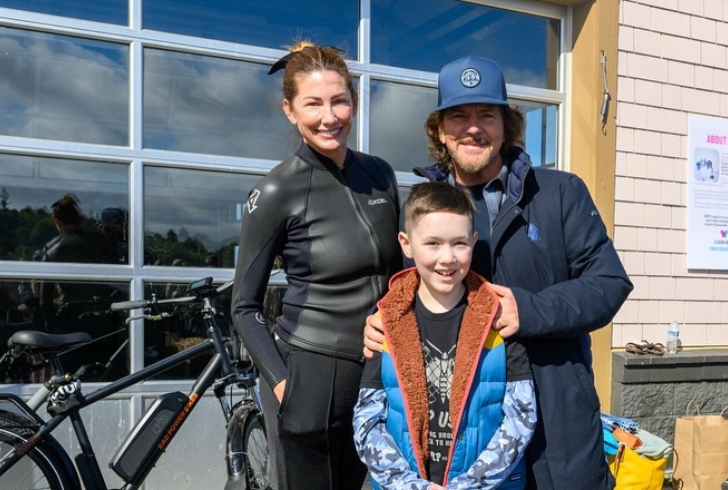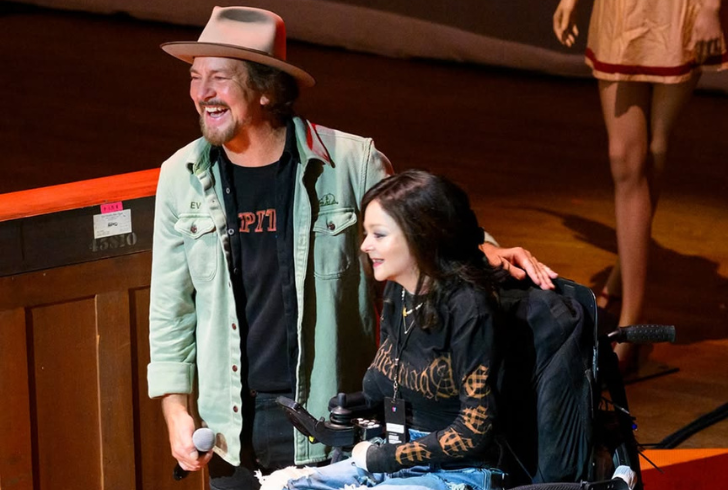Eddie Vedder isn’t just lending his voice to music—he’s using it to raise awareness for a rare genetic illness. This June, the Tribeca Film Festival will host the premiere of the brand-new Eddie Vedder documentary, “Matter of Time.”
This project highlights a condition called Epidermolysis Bullosa (EB), a painful and life-altering skin disease that primarily affects children.
The film goes beyond a typical concert experience. It tells the intimate tales of patients, researchers, and families. These voices come together in support of the goal of curing EB by 2030.
A Concert Tour with a Cause

In 2023, Vedder held solo shows in Seattle. While these performances attracted fans for the music, they served a deeper purpose. The EB Research Partnership (EBRP), a nonprofit organization established by Vedder, his wife Jill, and other dedicated families, received the proceeds from the concerts.
Their goal is clear. They want to raise awareness of the realities of EB and accelerate the search for a cure.
What Makes EB So Devastating?
Epidermolysis Bullosa damages the skin’s ability to handle friction. Even minor contact can cause severe blisters, open wounds, and infections. In many cases, the condition leads to chronic pain and reduced quality of life. While it remains rare, the suffering it causes is profound.
This struggle is brought to light by the Eddie Vedder documentary. Through honest interviews and moving footage, viewers see the daily toll of EB.
The Film’s Unique Storytelling
“Matter of Time” is a documentary that blends live music with emotional narration. It presents:
1. Firsthand accounts from patients and families
2. Insights from doctors and scientists
3. Powerful scenes from Vedder’s Seattle performances
“Resilience, community, and hope are captured in this film,” Eddie Vedder said in a statement. It is a privilege to assist in amplifying these voices.
Jill Vedder added, “We’ve come a long way, but the work isn’t over. This is more than a story—it’s a push toward a real solution.”
The Power of Venture Philanthropy
The EB Research Partnership takes a smart funding approach. It uses a model called venture philanthropy. This means donations help fund research while also supporting future investments. When treatments become successful, profits return to the foundation and fund new projects.
So far, this model has shown real results. Since 2010, EBRP has:
1. Backed over 160 research initiatives
2. Helped launch more than 50 clinical trials
3. Increased global awareness of EB
Michael Hund, CEO of EBRP, said, “Matter of Time” shows how rare disease research can move fast with the right support. We believe this model can help thousands more.”
A Personal Connection to the Cause
When the kid of a close family member was born with EB, the Vedders’ devotion was ignited. That experience moved them to act. Rather than offer sympathy alone, they built a platform for change.
Director Matt Finlin said, “This isn’t just about music. It’s about showing how community, creativity, and dedication can challenge even the toughest odds.”
Set for a Powerful Premiere
On June 12, the Eddie Vedder documentary will be shown for the first time to Tribeca Festival attendees. Produced by Door Knocker Media and Vitalogy Foundation, the film brings together raw emotion, research progress, and musical inspiration.
Karen Barzilay also joined the project as a producer, helping bring the vision to life.
Changing the Narrative for Rare Disease

Rare conditions like EB often go unnoticed. “Matter of Time” flips that script. It gives the spotlight to those who have lived in the shadows. Now, their stories are front and center.
The film calls for more than sympathy—it demands action. With more eyes on this condition and stronger public support, finding a cure no longer feels out of reach.
Why This Documentary Matters Right Now
Awareness alone doesn’t change outcomes. Funding, research, and collective action do. That’s why the Eddie Vedder documentary matters. It merges influence with purpose, delivering real hope to those who need it.
The countdown to 2030 continues. But with momentum building and public engagement growing, the mission to cure EB gains strength each day.
The message behind this film is clear: rare disease communities deserve to be seen and supported. Music might start the conversation—but purpose keeps it going.
